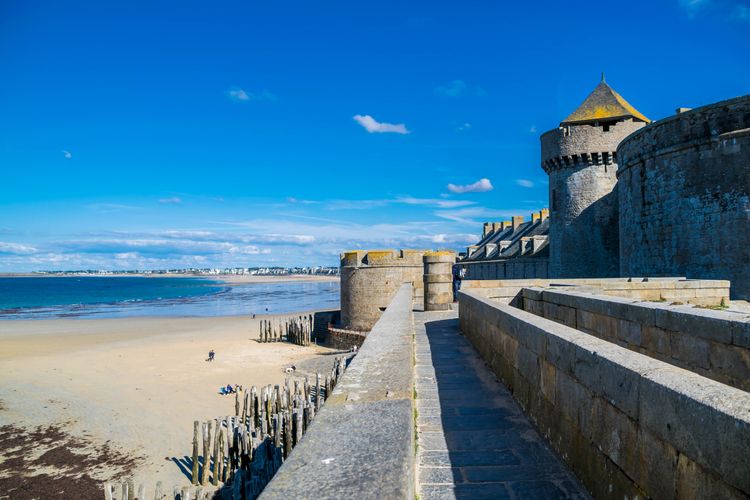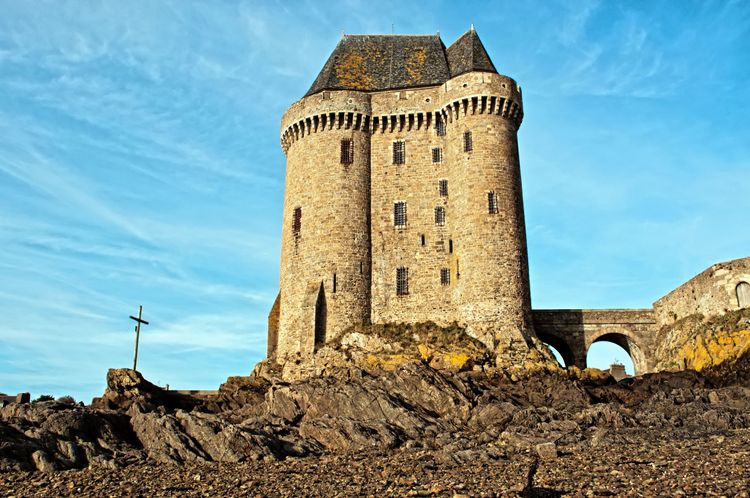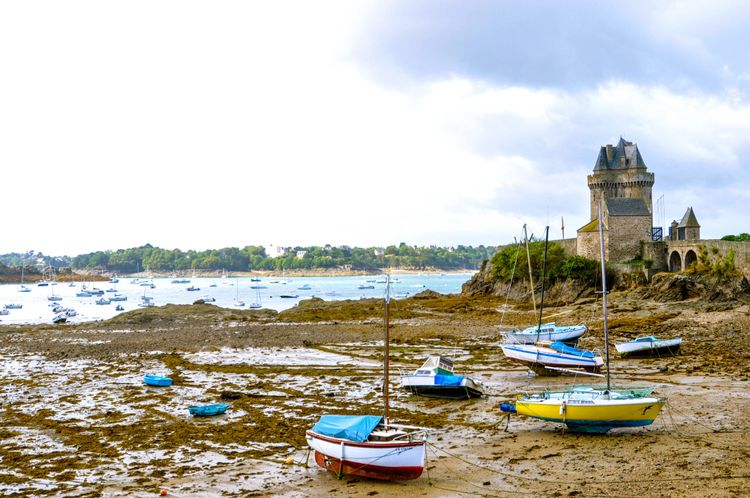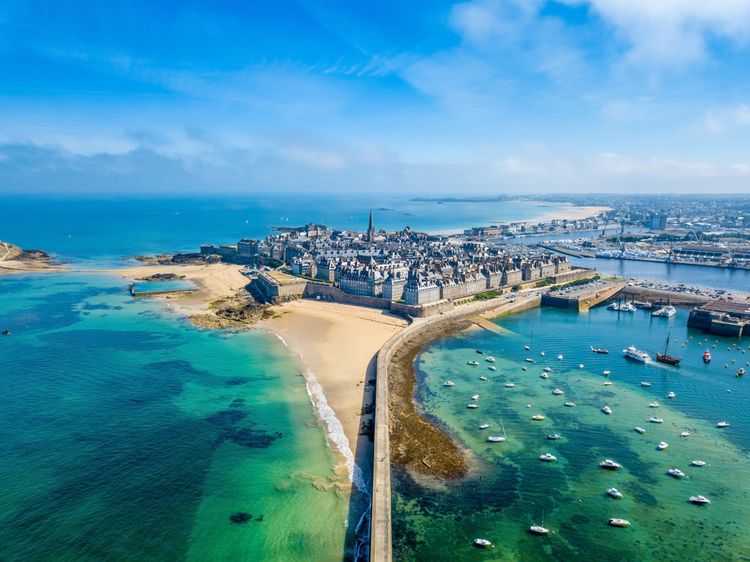This imposing tower, once used as a checkpoint for rights of passage, embodies the maritime power of Saint-Malo at the time. The tower consists of 3 towers joined by curtain walls: a wall linking two bastions, a classic of medieval architecture. These curtain walls are crowned with machicolations, holes used to throw projectiles at the foot of the tower. Construction was completed in 1382. Its history did not begin there, however, as the building was built on top of another, smaller fortified tower, which in turn was built on top of Gallo-Roman fortifications dating back to the 4th century. The life of the Solidor Tower has been a turbulent one, with residents storming the tower, it being converted into barracks and undergoing various works. Today, it is a monument that unfortunately remains unused.
Saint-Malo's 14th and 15th century buildings are timeless reminders of a rich past, transporting us back to the heart of the medieval era. Among these architectural gems are the Tour Solidor and the Château de Saint-Malo, two emblematic monuments that evoke the fascinating history of this fortified town. The Tour Solidor, built in the 14th century, stands proudly on the banks of the Rance estuary. The Château, meanwhile, is a majestic edifice that stands at the heart of the old fortified town. Built in the 15th century, it was originally an impregnable fortress, protecting the inhabitants of Saint-Malo from invasions and enemy attacks. Immersing yourself in the medieval buildings of Saint-Malo is to immerse yourself in the grandeur and cultural richness of this fortified city. Through the Tour Solidor and the Château, visitors are invited to explore the mysteries and stories of this glorious past, while admiring the medieval architecture and atmosphere that remain today.

Tour Solidor, an eye on the Rance

La tour de Solidor, Saint-Malo, France
- © Olivier de Caen / ShutterstockVisit the Solidor Tower
The maritime museum housed in the tower has closed. The entire collection of objects was moved to the Musée Maritime de Saint-Malo in April 2022. However, the view of the tower from the outside is well worth the diversions. The medieval architecture is impressive, and the surrounding area makes for a great seaside walk. So it's still well worth a visit, despite the fact that the monument is closed, hopefully only for the time being!

Waterfront with Solidor Tower in background, Saint-Malo, France
- © AlwaysOn / ShutterstockThe Château de Saint-Malo to protect against enemies
The Château de Saint-Malo is a historic site located on the north-west coast of France, in the region of Brittany. Its history dates back to the 15th century, when François II, Duke of Brittany, had a fortress built to protect the town of Saint-Malo from enemy invasion. Over the centuries, the castle has undergone numerous modifications and extensions to strengthen its defences. It has witnessed many conflicts, but ironically it has more often been stormed by the inhabitants themselves. Notably in 1590 to prevent the governor from giving in to the demands of Henry IV, the Protestant king, or during the French Revolution when the inhabitants rose up.
In the 19th century, the château was converted into barracks. In 1927, the town council acquired part of the site. Since then, the castle has become a museum, offering visitors a captivating insight into its tumultuous history. Saint-Malo Castle bears witness to the city's strategic importance over the centuries, and remains a symbol of the resilience of its inhabitants in the face of the challenges and trials of history.
Visit the Château de Saint-Malo
Today, the Château de Saint-Malo is a major tourist attraction. Visitors can explore its rooms, ramparts and towers, admire the panoramic views over the city and the sea, and discover the fascinating history of this iconic fortress. The castle's museum is dedicated to local history, offering visitors a unique opportunity to discover the secrets and legends surrounding this historic town, and to learn more about the castle's medieval architecture. Duchess Anne de Bretagne, daughter of Duke François II, wanted the building to resemble a coach. The 4 towers resemble 4 wheels, the Grand Donjon would be the passenger compartment and the point of the galley extending eastwards from the castle would represent the tiller, used to hang horses.
Practical information
📍 Location: Château de Saint-Malo, 35400 Saint-Malo
⏰ Opening times: 10am to 6pm every day except Mondays from 1 October to 31 March
👛 Admission: €2.50
 Saint-Malo
Saint-Malo






